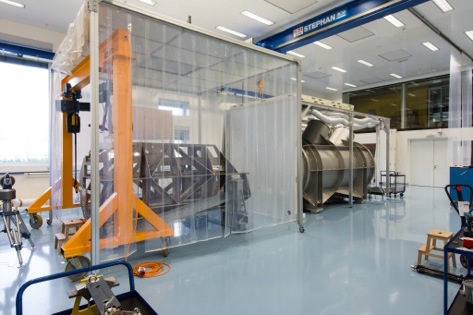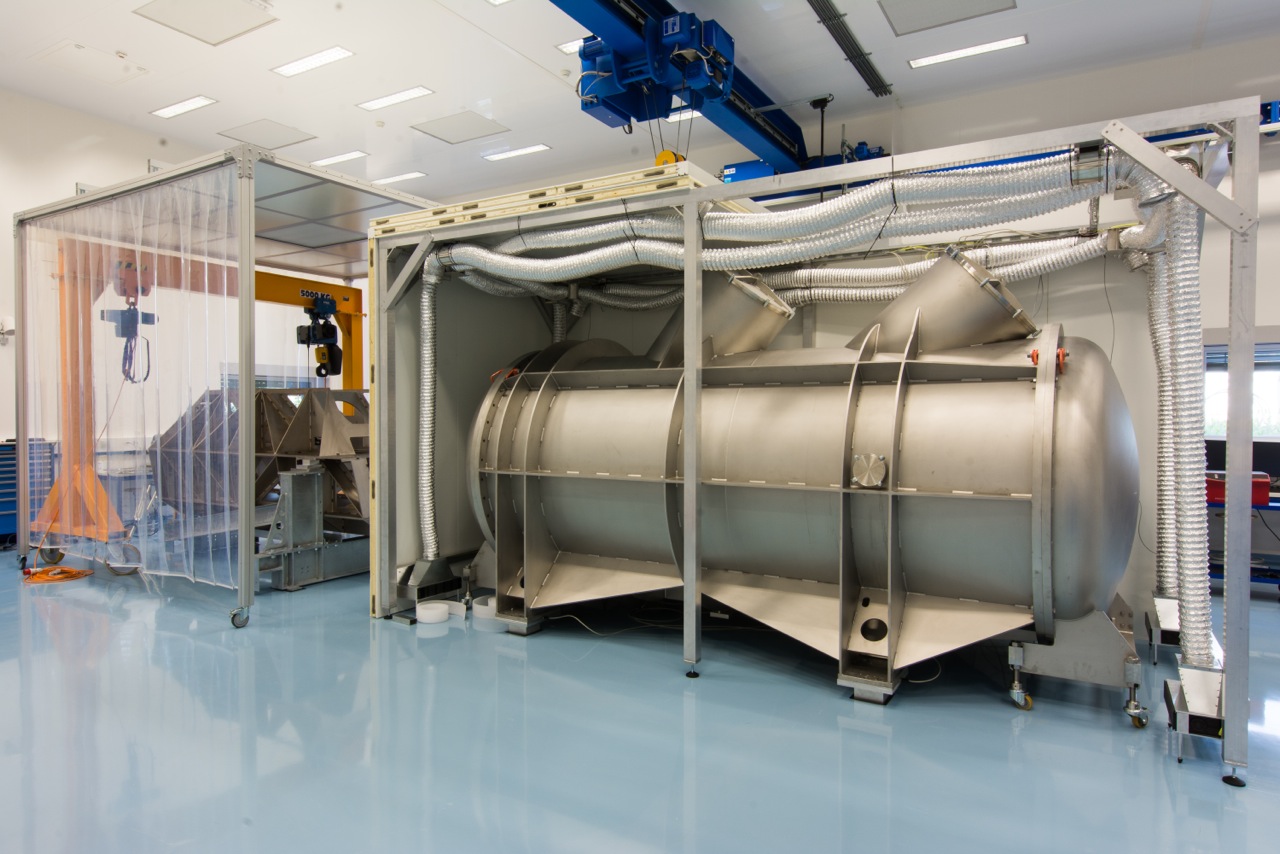ESPRESSO moved into the clean room of the Geneva Observatory
ESPRESSO will be able to measure variations of the radial velocities of stars in the order of 10cm/s corresponding to the movement imparted on a solar type star by an Earth mass planet. Once integrated and tested in the clean room,
ESPRESSO will be shipped to Chile to be installed on the VLT next year.
CHEOPS that will measure the sizes of Earth-like exoplanets and ESPRESSO that will measure their masses will be spearheading the Swiss planetary science and particularly the
NCCR PlanetS. Visit the cleanroom.
The tank of ESPRESSO
This vessel in which the spectrometer will be mounted weighs 4500 kg, it will be vacuumed and temperature controlled. The variations of the pressure should not exceed one thousandth of a millibar (mbar) and the temperature should be stable with millidegree accuracy.
"The slightest variation in temperature and pressure could deform the instrument, the measure would be modified and prevent us from achieving our goal: the determination of exoplanets masses as little as the Earth," explains Francesco Pepe,
the PI of ESPRESSO.
The T3 enclosure
This enclosure (open on the photo) that will be temperature-stabilized to a hundredth of a degree, has a heating system only. In fact, its temperature set point is a degree greater than that of the outside. The interior temperature is controlled accurately by the heating system. The air is constantly shuffled thanks to an air circulation system, thus ensuring a greater homogeneity of the inside temperature.
The optical bench

Weighing about 3 tons, the optical bench is a key piece to ensure the rigidity of the spectrometer and the accuracy of measurements. The piece was made in Spain and sent to Germany where it was immersed in a nickel bath in order to protect from rust.
It is on this "skeleton" that will come to integrate the different parts of the ESPRESSO optical spectrometer.
Chimneys
These two locations looking like chimneys, on top of the tank, are designed to receive the two CCD cameras capturing images of the spectra. Scanning the spectrum from red to blue is only possible with two cameras with technical characteristics
corresponding to these two ranges of the spectrum.
Their installation in Chile will not be easy given the difficulty of access (two special openings had to be made in the roof of the T3enclosure) and given their weight (about 150kg).
Light entry by optical fibre
The resolution of the spectrometer depends on the configuration mode. There are three possible configurations: the "medium resolution" mode (R = 60,000), where we can combine the light of four telescopes of the VLT and "high resolution" (R = 120,000) and " very high resolution "(R = 240,000) modes where only the light of one of the four telescopes enters the spectrometer.
